M/S Quest has just returned to Longyearbyen after a very special early Arctic summer Svalbard trip – a trip where we had some days that were strongly influenced by the weather, and so we became true explorers: spending many hours scouting for wildlife amongst the sea ice.
In the morning of the first day of our expedition, the sun shone brightly in the blue sky over Kongsfjorden and as we sailed towards Ny-Ålesund, we could see in the distance lots of small blows over the surface of the ocean, so far away at first that they were only noticeable by the way that the blows broke up the glittering sunlight on the waves ahead. As we continued our journey towards the research village and were able to look closer at the large pod of beluga whales swimming along the shoreline, a sharp-eyed guide spotted a female polar bear and very young cub together on the shoreline behind the whales.

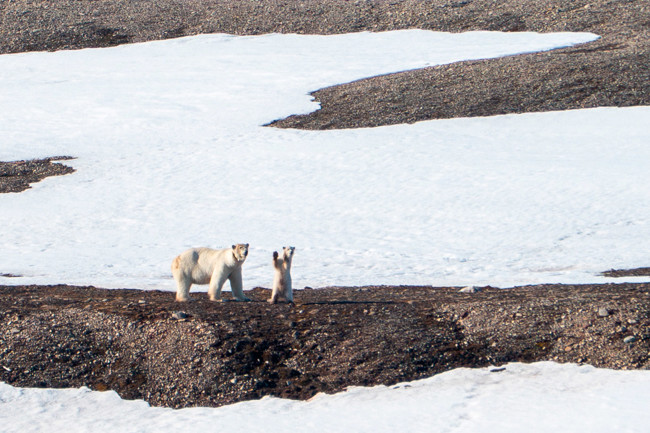
We watched the two polar bears from the ship, where we were around 900m from them, but they were clearly visible through our binoculars. They were feeding on a carcass on the beach, but we saw several times that the cub was be startled by belugas that came close to the shoreline and the bears’ food, and the little cub tried to run up the hillside away from the little white whales. We watched as the mother patiently went up the hill to retrieve her cub and bring it back the food source. It’s not unusual for female polar bears with cubs to be pursued by males that want to kill the cub to be able to mate with the female themselves (statistically speaking, it is unlikely that the cub is his own offspring) so the cub was right to be wary of large white things approaching them from the sea. But this time, it was just beluga passing by and mum knew that it was safe to continue eating.
Even without pesky male bears following them, being a mother polar bear is still not a walk in the park: during some of this mother’s attempts to corral her cub back to the food source on the beach, we saw that the cub seemed to be playing around and kept walking on two legs instead of four.
Guests with eager eyes also spotted some minke whales in the fjord with the beluga, and some Atlantic puffins. Soon, it was time to leave these bears and soon dock in Ny-Ålesund. Here, the day continued with glorious sunshine, and the wildlife checklist being rapidly filled. We explored the research town whilst hearing stories & learning about the rich history. We zodiac cruised along the glacier front of Blomstrandbreen in the calmest of seas and the bluest of skies, whilst arctic terns, long-tailed skua & king eider flew overhead.
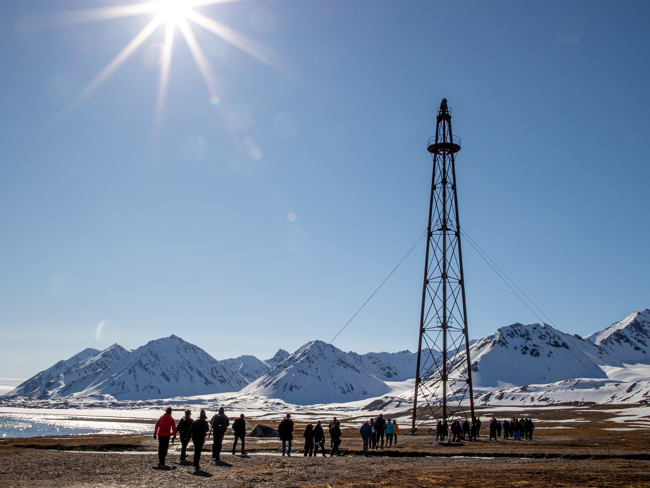
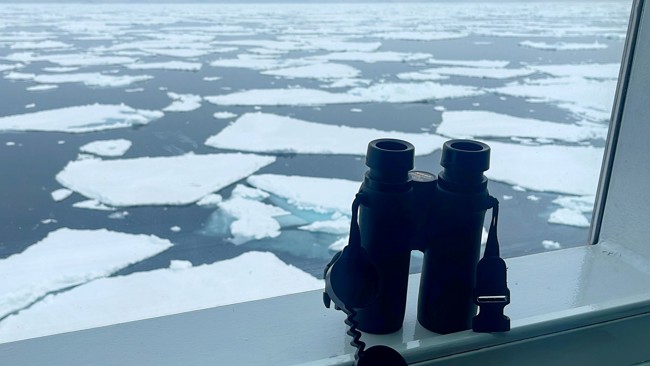
We met together in the observation lounge for an official welcome from the Captain, Expedition Leader Rickard warned us that the beautiful weather wasn’t going to continue, and that it looked like we’d likely be battling conditions for the rest of the trip.
We looked together at the weather charts that showed a small but fierce storm hitting the coast of North-west Spitsbergen, and so our new plan A was to head to the sea ice edge, close to 80 degrees north. But to do this, we needed to push through the rougher weather in the night and the seas would hopefully get calmer the further north we sailed.
The closer we sailed to the ice edge, the calmer the wind became, and this meant that, as is normal in the Arctic, the fog came too. Amongst the ice, we saw plenty of black guillemots, brünnich’s guillemots and little auks feeding away. During lunch, the fog lifted significantly, and this meant we were able to head out into the zodiacs, and we were exhilarated to find a large stable sea ice flow that we could land on, before getting back in the zodiacs and finding bearded seals resting on ice flows. This wasn’t enough excitement for everyone however – and the bravest souls swapped out their insulated zodiac suits for their swimwear and leapt into the (literal) Arctic Ocean.
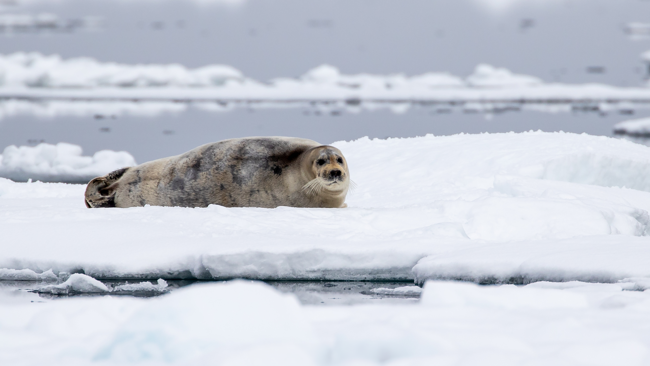
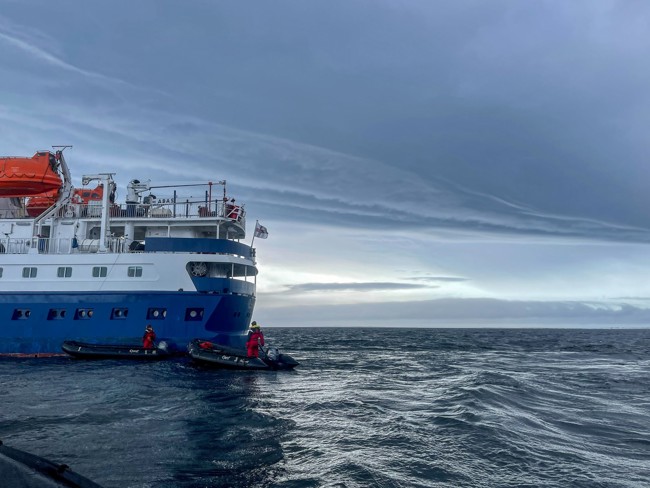
We were surrounded by even more ice as we sailed southwards towards the Hinlopen Straight. From the observation lounge, we became skilled spotters of seals, birds, walrus & polar bear tracks on the ice long through the evening.
Now in Northeast Svalbard, we prepared for a landing at Nordre Russøya, and as the guides prepared the zodiacs, the sky was heavy with potential weather that we hoped would pass us by. It did not, and after our fill of Pomor trapper history, and had our fill of brent goose & great skua sightings, we were sufficiently drenched on the way back to the ship. In the afternoon, we went hiking Faksevågen – in calm but cloudy conditions. Later we cruised deeper into Lomfjorden where we were lucky to spot even more wildlife out on the fast ice.
Throughout just the first three days of this expedition, we experienced all kinds of Arctic weather, and how brutal nature can be – and whilst we could go back to the ship, dry out our clothes and warm up with a large meal, those early explorers, trappers and whalers would have had to withstand these conditions for long periods, and in probably poor clothing, hundreds of years ago. With so many changes so early on in the expedition, we grew together to appreciate what the Arctic has to offer and were rewarded with great sightings.
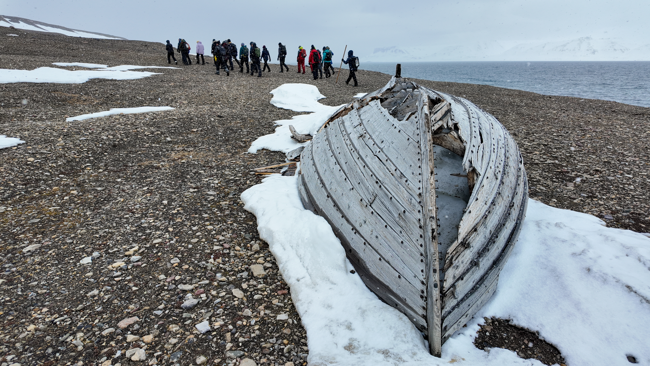
Please note: Depending on the lens used for a photo or video shot an animal may appear to be closer than it is. We always follow strict wildlife guidelines to ensure that we do not cause any disturbance.












